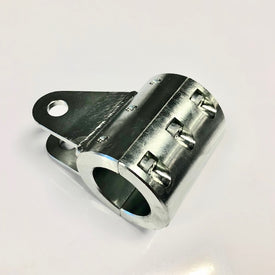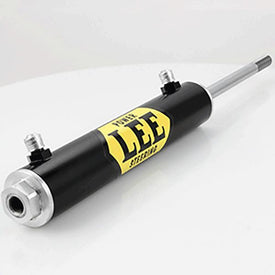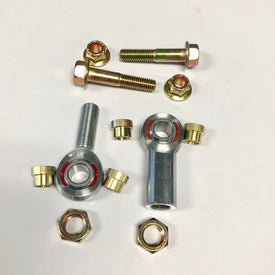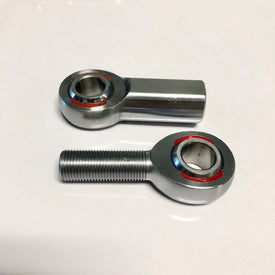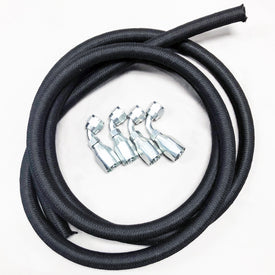Power Steering Rams
What is Power Steering Ram Assist and why is it Important?
Power Steering Ram Assist or Hydraulic Assist uses hydraulic pressure from the existing power steering system to a hydraulic cylinder (ram) connected between the axle housing and tie rod to generate assistive steering force, which is especially beneficial for large tires and rough terrain.
How Rams Work
The steering box still controls the steering position of the tires through a mechanical linkage, while the hydraulic cylinder assists with the force required for turning. This requires that your steering gearbox has ports added to it that will power the ram cylinder with the existing pressure from the power steering system. In many instances, this may also require higher flow setting on your pump.
The benefits of using a power steering ram include:
- More accurate steering feel on and off-road
- Reduces stresses on the steering gearbox, frame, and linkage
- Absorbs road irregularities
- Helps steer big tires in rough terrain
Key Features
- Material Strength: High-grade materials like stainless steel or anodized aluminum ensure corrosion resistance and durability.
- Seal Integrity: Reliable seals prevent hydraulic fluid leakage and maintain system efficiency.
- Precision Engineering: Smooth operation and minimal internal friction ensure accurate and responsive steering.
- Compatibility: Designed to integrate seamlessly with specific steering systems and vehicles.
- Pressure Rating: Adequate pressure handling to suit the demands of your application.
FAQs About Power Steering Rams
Can I install a ram assist cylinder myself?
Installing a ram assist cylinder can be a complicated process for a first timer. It is essential to make sure you choose a cylinder with the correct stroke length. This is done by measuring the amount of travel your tie rod travels to go from full lock left to right. Then, in most cases, you have to fabricate mounts. Sometimes you can use bolt-on brackets and tie rod clamps, but often it is necessary to weld mounts. During this process, you must mount the cylinder as parallel to the tie rod and check for interference as the suspension articulates.
What are the signs of a failing steering ram?
Symptoms include difficulty steering, hydraulic fluid leaks, unusual noises during operation, and inconsistent steering response.
Can I repair a damaged steering ram, or should it just be replaced?
Minor issues like seal replacements can often be repaired. However, significant damage to the cylinder or rod typically requires a replacement to ensure safety and reliability.
How often should I maintain my steering ram?
Regular maintenance, including inspecting seals, checking for leaks, and ensuring proper hydraulic fluid levels, is recommended every six months or as the manufacturer specifies.

